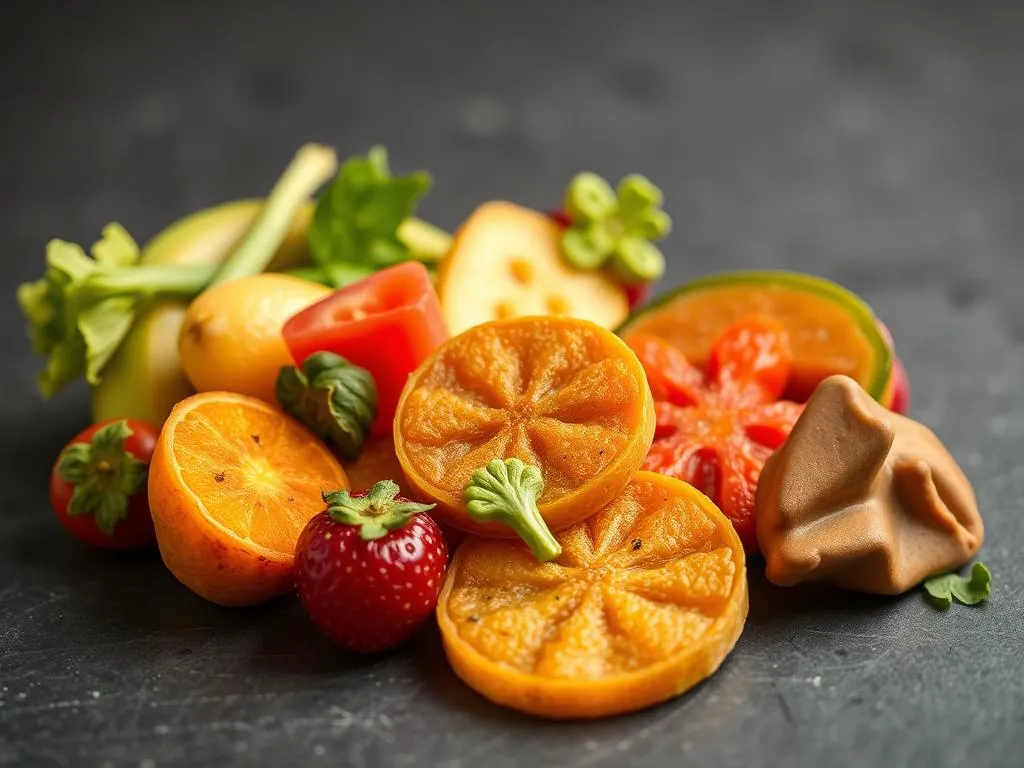
Introduction
Pancreatitis in dogs is a serious condition that requires careful management and dietary considerations. It occurs when the pancreas becomes inflamed, often leading to severe abdominal pain and digestive issues. The condition can be acute, developing suddenly, or chronic, where inflammation persists over time. The causes of pancreatitis can vary widely, with high-fat diets being a common trigger, alongside certain medications and underlying health issues. Symptoms of this condition include vomiting, diarrhea, and abdominal pain, making it crucial for pet owners to recognize these signs early.
Managing a dog’s diet is pivotal in controlling pancreatitis. A low-fat diet tailored to the dog’s specific needs can help alleviate symptoms and promote healing. One effective strategy is to incorporate suitable fruit and vegetable treats for dogs with pancreatitis. These treats can provide essential nutrients while being gentle on the dog’s digestive system. Let’s delve into the details about pancreatitis, its management, and the types of fruits and vegetables that can benefit your furry friend.
Understanding Pancreatitis in Dogs
What is Pancreatitis?
Pancreatitis is the inflammation of the pancreas, an organ that plays a vital role in digestion and blood sugar regulation. When the pancreas is inflamed, it can lead to a variety of health issues, including malnutrition and diabetes. There are two main types of pancreatitis in dogs:
-
Acute Pancreatitis: This type occurs suddenly and can be life-threatening if not treated promptly. Symptoms may appear suddenly and can include severe vomiting and lethargy.
-
Chronic Pancreatitis: This type develops gradually and can cause ongoing digestive issues. Dogs with chronic pancreatitis may experience recurrent bouts of gastrointestinal distress.
Causes and Risk Factors
Several factors can contribute to the development of pancreatitis in dogs:
-
High-Fat Diets: Diets rich in fat are significant contributors to pancreatitis. Dogs that have been fed table scraps or high-fat treats are at a higher risk.
-
Certain Medications: Some medications can induce pancreatitis as a side effect.
-
Underlying Health Issues: Conditions such as obesity, diabetes, or hypothyroidism can increase risk.
Certain breeds, such as terriers, spaniels, and retrievers, are also more predisposed to pancreatitis. Additionally, older dogs and those with obesity are at greater risk, highlighting the need for careful dietary management.
Symptoms of Pancreatitis
Recognizing the symptoms of pancreatitis early is vital for effective management. Common signs include:
-
Vomiting: Frequent or severe vomiting is a primary symptom.
-
Diarrhea: Loose stools, possibly with blood, can occur.
-
Abdominal Pain: Dogs may exhibit signs of discomfort, such as a hunched back or reluctance to be touched.
-
Lethargy: A noticeable decrease in energy and activity levels.
-
Loss of Appetite: Dogs may refuse food or show disinterest in their meals.
If you notice any of these symptoms, it is essential to contact your veterinarian for an accurate diagnosis and treatment plan.
The Role of Diet in Managing Pancreatitis
Importance of a Low-Fat Diet
A low-fat diet is crucial for dogs suffering from pancreatitis. When the pancreas is inflamed, it struggles to properly digest fats. A diet low in fat helps reduce the workload on the pancreas and can aid in recovery. Dogs with pancreatitis often require a specialized diet that is easily digestible and provides the necessary nutrients without excess fat.
Consulting Your Veterinarian
Before making any dietary changes, it’s essential to consult your veterinarian. They can help create a personalized diet plan tailored to your dog’s specific needs. This plan may include recommendations for commercial dog foods formulated for pancreatitis or advice on preparing homemade meals.
Fruit and Vegetable Treats for Dogs with Pancreatitis
Benefits of Fruits and Vegetables
Incorporating fruits and vegetables into your dog’s diet can provide several benefits. They are excellent sources of vitamins, minerals, and fiber, which help support overall health and digestion. Fruits and vegetables can also serve as low-calorie, low-fat treats that satisfy your dog’s craving for something tasty without overloading their system.
Safe Fruits for Dogs with Pancreatitis
When selecting fruits for dogs with pancreatitis, it’s important to choose those that are low in sugar and fat. Here are some safe options:
-
Blueberries: Packed with antioxidants, blueberries are low in calories and can support immune health. Serve in moderation; a few blueberries make a great treat.
-
Apples: Apples are high in fiber and vitamin C. Ensure the seeds and core are removed before serving. A few slices are ideal.
-
Watermelon: Watermelon is hydrating and low in calories. Make sure to remove any seeds and rind before offering it to your dog.
-
Pumpkin: Plain canned pumpkin (not the spiced pie filling) is beneficial for digestive health. A spoonful mixed into food can be a great addition.
Safe Vegetables for Dogs with Pancreatitis
Similarly, some vegetables can be offered as treats for dogs with pancreatitis:
-
Carrots: Carrots are low in calories and high in fiber. They can be served raw, steamed, or pureed.
-
Green Beans: These are also low in calories and can be served cooked or raw. Ensure they are plain, without added sauces or oils.
-
Sweet Potatoes: Rich in vitamins and fiber, sweet potatoes can be cooked and mashed or sliced into small pieces. Avoid adding butter or sugar.
Treat Recipes
Creating homemade treats can be a fun and healthy way to provide your dog with safe snacks. Here are two simple recipes:
Blueberry and Sweet Potato Treats
Ingredients:
– 1 cup cooked and mashed sweet potato
– 1/2 cup blueberries
– 1 cup oat flour
Instructions:
1. Preheat your oven to 350°F (175°C).
2. In a bowl, mix the sweet potato and blueberries until combined.
3. Gradually add oat flour until a dough forms.
4. Roll out the dough and cut into desired shapes.
5. Bake for 20-25 minutes or until firm.
6. Let cool before serving.
Carrot and Apple Chews
Ingredients:
– 1 cup finely grated carrots
– 1 cup unsweetened applesauce
– 1 cup oat flour
Instructions:
1. Preheat the oven to 350°F (175°C).
2. Combine the grated carrots and applesauce in a bowl.
3. Gradually mix in the oat flour until a dough forms.
4. Drop spoonfuls onto a baking sheet, flatten slightly.
5. Bake for 20 minutes, then allow to cool before serving.
Fruits and Vegetables to Avoid
While many fruits and vegetables are safe for dogs with pancreatitis, some should be avoided due to potential harm:
-
Avocado: Contains a substance called persin, which can be toxic to dogs.
-
High-Sugar Fruits: Fruits like grapes and cherries can lead to digestive upset and should be avoided.
-
Onions and Garlic: These can be toxic and should never be fed to dogs.
-
Potatoes: Raw potatoes contain solanine, which can be harmful. Cooked potatoes should be served without skin or added fats.
How to Introduce New Treats
Gradual Introduction
When introducing new treats, especially for dogs with pancreatitis, it’s important to do so gradually. Start by offering a small amount of the new fruit or vegetable alongside their regular food. Monitor your dog for any signs of discomfort or digestive upset.
A suggested timeline for introducing new treats could be:
- Day 1: Introduce a small piece.
- Days 2-3: Monitor for any adverse reactions.
- Days 4-5: If no issues arise, gradually increase the amount.
Monitoring for Reactions
Watch for any signs of intolerance or adverse reactions, such as vomiting, diarrhea, or changes in behavior. If you notice any concerning symptoms, discontinue the new treat and consult your veterinarian.
Additional Dietary Considerations
Commercial Treats
There are commercial fruit and vegetable-based treats specifically formulated for dogs with pancreatitis. When selecting these, always read the label to ensure they are low in fat and do not contain harmful ingredients. Look for treats that list whole foods as primary ingredients and avoid those with added sugars or fillers.
Homemade vs. Store-Bought
Both homemade and store-bought treats have their pros and cons. Homemade treats allow you to control the ingredients and ensure they are safe, but they require time and effort. Store-bought treats can be convenient, but always verify their nutritional content to ensure they are suitable for your dog’s dietary needs.
Cost is another consideration; homemade treats may be more economical in the long run, especially if you buy ingredients in bulk.
Conclusion
Incorporating safe fruit and vegetable treats for dogs with pancreatitis can provide essential nutrients while supporting digestive health. These treats can be a delightful way to reward your dog without compromising their health. However, it is vital to consult with your veterinarian to ensure you are meeting your dog’s specific dietary needs. A well-balanced diet is crucial for managing pancreatitis and maintaining the overall health of your furry friend.
By being mindful of what you feed your dog and choosing safe treats, you can help them lead a happy and healthy life.









